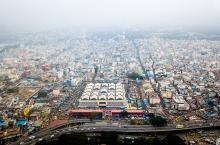Transport in the urban centres of emerging economies is becoming a major battleground for combating climate change.
Projections presented by ITF Economist Aimée Aguilar Jaber during the COP 20 climate change negotiations in Lima, Peru indicate that big cities in China, India and Latin America with over 500,000 inhabitants will more than double their share of world passenger transport emissions by 2050 to 20 per cent, from nine per cent in 2010, if current urban transport policies remain unchanged. 38 pe
Transport in the urban centres of emerging economies is becoming a major battleground for combating climate change.
Projections presented by ITF Economist Aimée Aguilar Jaber during the COP 20 climate change negotiations in Lima, Peru indicate that big cities in China, India and Latin America with over 500,000 inhabitants will more than double their share of world passenger transport emissions by 2050 to 20 per cent, from nine per cent in 2010, if current urban transport policies remain unchanged. 38 per cent of the total growth in world surface transport passenger emissions to 2050 will come from big cities in these three regions in such a business-as-usual scenario.
These new projections, released by ITF for the event, highlight a critical choice for policy-makers: whether to pursue urbanisation based on public transport or on private transport with cars and two wheelers. Sustained policies that promote either private or public urban transport lead to very different mobility futures, as projections for modal shares in 2050 show (see charts, left).
These alternative scenarios have profound impacts for the contribution of urban transport to global emissions that are detailed in the 2015 ITF Transport Outlook, of which chapter 4 containing the projections for China, India and Latin America was pre-released for the COP20 conference.
The projections were presented by ITF Economist Aimée Aguilar Jaber during the Side Event "Mitigation Potential of Urban Sustainable Low-Carbon Transport: Priorities for INDCs, NAMAs and SDGs" on 4 December, jointly organised by the5466 Institute for Transportation and Development Policy (ITDP) and ITF.
Projections presented by ITF Economist Aimée Aguilar Jaber during the COP 20 climate change negotiations in Lima, Peru indicate that big cities in China, India and Latin America with over 500,000 inhabitants will more than double their share of world passenger transport emissions by 2050 to 20 per cent, from nine per cent in 2010, if current urban transport policies remain unchanged. 38 per cent of the total growth in world surface transport passenger emissions to 2050 will come from big cities in these three regions in such a business-as-usual scenario.
These new projections, released by ITF for the event, highlight a critical choice for policy-makers: whether to pursue urbanisation based on public transport or on private transport with cars and two wheelers. Sustained policies that promote either private or public urban transport lead to very different mobility futures, as projections for modal shares in 2050 show (see charts, left).
These alternative scenarios have profound impacts for the contribution of urban transport to global emissions that are detailed in the 2015 ITF Transport Outlook, of which chapter 4 containing the projections for China, India and Latin America was pre-released for the COP20 conference.
The projections were presented by ITF Economist Aimée Aguilar Jaber during the Side Event "Mitigation Potential of Urban Sustainable Low-Carbon Transport: Priorities for INDCs, NAMAs and SDGs" on 4 December, jointly organised by the







